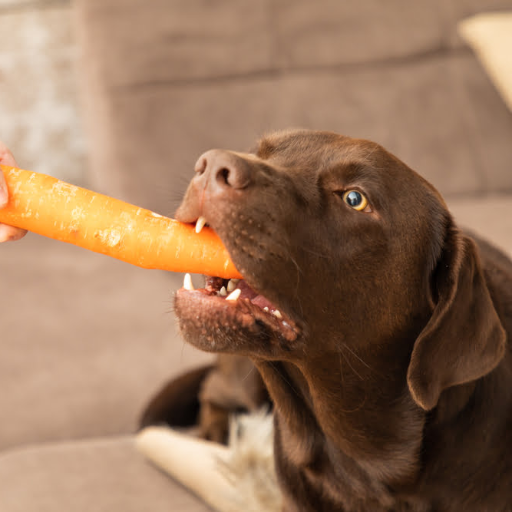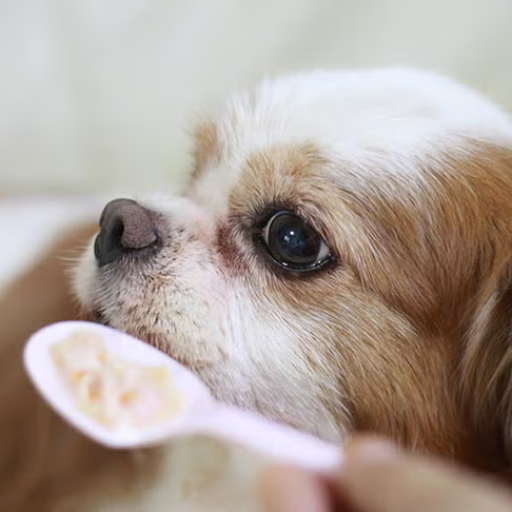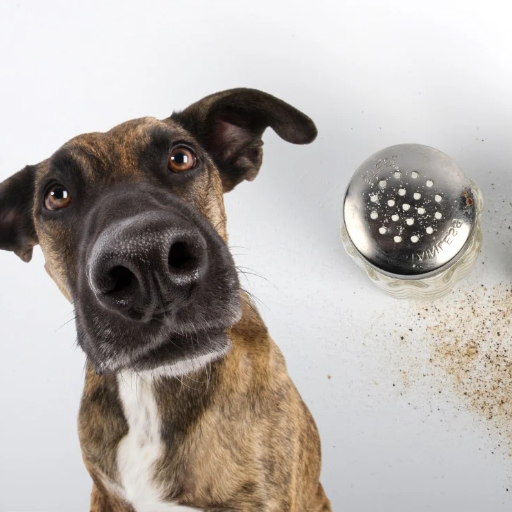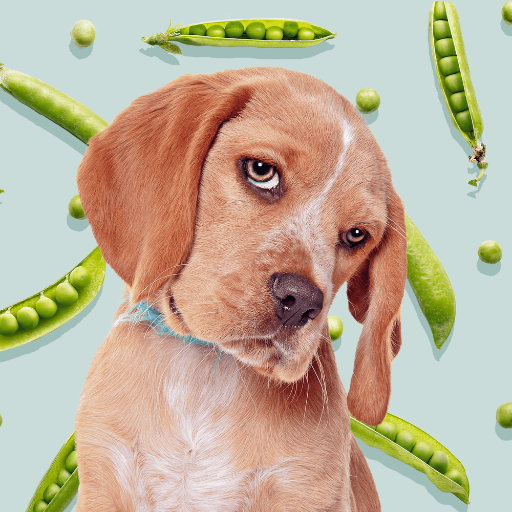This article is concerned with the injuries that occur in dogs as a result of dog shoulder dislocation, or shoulder luxation in the medical term, one of the joint inflammations that can severely affect a dog’s functional ability as well as its quality of life. In this context, the present article will provide an in-depth examination of the factors, symptoms, andavailable treatment procedures related to this injury which must be useful to animal owners as well as animal professionals. Instead, it facilitates a better understanding of how to deal with a dislocated shoulder, which can alleviate pain and avoid further injuries. This condition will be discussed in detail from the different possible angle that may lead to its occurrence, its ample clinical features and also the management modalities so that both the practicing and veterinarians do not feel devoid of any topic related to shoulder dislocation in dogs.
What Causes Shoulder Dislocation in Dogs?

How Reader’s Can Know the Causes of Dog Shoulder Luxation
The dislocation of a dog’s shoulder joint, which is a condition known as, can be caused by a number of more or less commonplace events such as, hostile impact, falling, accidents despite the protective harness cloth on during for example vehicular travel, etc. The shoulder may be dislocated by such external force causing dislocation of its joint. Some breeds based on heredity have characteristic bone irregularities further promoting loose limbs and heterotypic dislocations of the joints. Constant chronic inflammatory diseases for example, arthritis, may promote the erosion of both articular surfaces and/or capsule and when in some conditions result in ligament laxity/distance, there is likely evolution of dislocation.
Is My Dog’s Breed at Greater Risk of Dislocation?
As a matter of fact, certain dog breeds are more prone to dislocating shoulders owing to their genetic make-up and anatomy. Breeds such as St Bernards, Great Danes and some large breeding animals have a greater tendency to encounter joint problems including shoulder dislocation because of their size and weight which exert extra pressure on their joints. It’s also possible for certain smaller breeds, such as mini and toy poodles, which contain genetic traits for certain disorders, to have dislocations as a result of the shape of their bones. It is essential for pet owners of such breeds to be cautious about their pet’s physical activity and get the necessary medical assistance to prevent and control such conditions as much as possible.
How Shoulder Injuries occur in Dogs
Shoulder injuries in dogs mostly result from sudden trauma such as slips, falls, or accidents that dislocate the joint. With time, continuous stress from different activities or a built-in genetic joint weakness can also cause an injury. It is important to keep an eye on activity levels and offer appropriate care to prevent such injuries.
What Are the Symptoms of Shoulder Dislocation in Dogs?

Observing Shoulder Instability in Dogs
Shoulder dislocation and instability in canines is common among older dogs due to trauma related to accidents or falls. Symptoms include limping or favoring one leg, reluctance to play, some amount of swelling around the shoulder joint, and even pain when the area is touched along with movement of the limb. Other signs include audible signs of instability such as popping or clicking sounds while the dog is in motion; these noises tend to lessen with joint instability. All of these symptoms are concerning and warrant early veterinary intervention for effective treatment and management.
How Lameness Is Related to Dislocated Shoulders
Wagging is not the only sign of shoulder dislocation in dogs; lameness is also a reliable indication sensation as it represents the pain associated with bearing weight on the affected limb. As a result of this condition, the dog will avoid weight-bearing or moving of the affected leg because of the pain and instability of the joint. It is important to go to the clinic whenever this happens as a vet may need to assess the injury in order to provide the required treatment if necessary for the good of the dog.
Why Symptoms May Appear All Of A Sudden
Shoulder dislocation in dogs occurs unexpectedly, and symptoms might not appear until there is trauma or overexertion. For instance, sudden jumps or falls or awkward rotational movements may dislocate the shoulder joint causing immediate pain and discomfort for the animal. Moreover, pre-existing conditions like, joint looseness or slight previous sustained injuries can also build up soreness which may become apparent after excessive movement. It is essential to identify the problem and act quickly to reduce further damage.
How Is a Dislocated Shoulder Diagnosed in Dogs?

The Role of Veterinary Examination
Dislocated shoulders in dogs are diagnosed on the basis of a detailed veterinary examination. Generally, the veterinarian will start with a physical examination to assess any limitations in the range of motion and local pain and/or swelling. Most of the time the dislocation is confirmed with various imaging techniques like X rays, which help to clearly visualize the joint structure and reach an accurate diagnosis. An early intelligent analysis is crucial in establishing the safe and effective treatment options available.
Diagnosis and Treatment
Dislocated shoulder diagnosis is made through physical examination and imaging studies. Treatment of shoulder dislocation varies depending on the case. In a case of minor dislocation, ice pack application together with rest, and anti-inflammatory drugs could be enough to decrease the pain and let the joint recuperate. In more severe cases, a veterinarian may need to reduce the dislocated shoulder grade, followed by splinting or bandaging the shoulder to allow healing. A surgical procedure may be obligatory in extreme laxity of the surrounding ligaments or the cases of shoulder dislocation are repeated on a number of occasions. Post-treatment management includes limitation to activities for a given period and sometimes rehabilitation exercises for strength and movement of the affected leg.
What Treatment Options Are Available for Dog Shoulder Dislocation?

When to Use a Sling or Splint
Say for instance a dog’s shoulder has experienced mild to moderate dislocation – that’s when a sling or splint comes in handy. Both the joint and the device used jedstabilizing it, cut down movement and support the nutrient-rich inflammation as the joint repairing. a sling or splint is most often used adherent to repositioning the joint by hand. In surgery not required cases also use it. It is important to adhere to the guidelines given by the veterinarian concerning the application time and method. Failure to do so will result in mutilation of the healed area.
Different Options of Surgery of Dog Shoulder
Surgery is often warranted in dogs that have a dislocated shoulder joint that is so badly damaged that other procedures are unlikely to be successful or if such joints become recurrent. The surgery involves most of the repairing and stabilization of the surrounding ligaments about the joint so that the dislocations do not reoccur in the future. The type of surgery performed will depend mainly on the degree of the injury sustained and the overall well being of the dog. Recovery is an important aspect of surgery, and is usually characterized by immobilization followed by exercise to regain full range of motion and functional capacity of the joint. Always consult a veterinarian for the suitable surgical approach for your dog’s case.
The Process of Closed Reduction of Joint Injuries
This closed reduction is an approach that involves simply replacing a joint that has been dislocated. Closed reduction is needed for some shoulder dislocations for dogs and includes placing the shoulder back into its appropriate joint. This process is also done with anesthesia to lessen pain and muscle spasm. Now when puppys shoulder is back in place, a sling is often applied as well to restrict the movements of the shoulder. Use of the sling helps much with the diathesis after dislocation of the joint. Such post-operative flees activity, plus active range of motion, would be useful to a point in not allowing re-dislocation otherwise rest is imperative to full healing. Always seek the advice of the veterinarian in the first place closed reduction operational is applicable to your dog’s problem.
How Can I Help My Dog’s Recovery from a Shoulder Dislocation?

Comprehending Your Dog’s Range of Motion
It is essential to be careful when managing the dog’s range of motion during the rehabilitation phase following a shoulder dislocation. First, restrict the level of activity in the future so as to avoid sustaining even more damage, and place your canine in a small area so that he cannot jump or run around. Once again, light exercises should be performed only as directed by the vet. One treatment option may be physical therapy in order to restore proper function of the joints. Watch your pet closely and communicate your concerns to the veterinarian in order to be able to modify the management approach.
How To Use Shoulder Braces
Dogs’ shoulders can be stabilized and supported by properly fitting somali assists following a dislocated shoulder as part of their rehabilitation process. A shoulder brace, when correctly adjusted, assists to limit inappropriate motion thus speeding up the healing process and shielding the shoulder from sore. It is crucial to observe your veterinary’s advice regarding when and for how long the brace is to be used, and when it is custom fitted so that it is not uncomfortable to your dog. The elastic supports used for the brace should be examined regularly for any damage and modified if necessary during the recovery period so that the effectiveness is not compromised.
Preventing Future Injuries of Shoulders of Your Dog as a Pet Owner
To avoid future shoulder injuries in your pet, adhere to a fixed exercise schedule that provides a reasonable amount of activity but does not result in fatigue. Control the duration of play for your dog and eliminate strenuous activities involving the shoulder joints. Make sure that your pet is fed a healthy and balanced diet to help in managing their weight which decreases excess strain on their joints. In addition, regular visits to the veterinary practitioner can help to detect and treat any problems associated with the joints at an earlier stage.
Reference sources
Frequently Asked Questions (FAQs)
Q: What are some shoulder problems in dogs?
A: Common shoulder injuries in dogs may include shoulder dislocations, luxations, and even shoulder tendons’ ruptures. These injuries may be a result of acute trauma or a gradual degenerative process affecting the shoulder joints in dogs. Other forms of shoulder joint injury include medial shoulder instability and luxation of the shoulder particularly in miniature bred dogs.
Q: What are the signs of a shoulder dislocation in a dog?
A: Limb use restrictions and typical shoulder dislocation symptoms in dogs include a change in heel status where a specific elbow is used more than the others as well as localized pain and tenderness of the shoulder or the area surrounding it. Rarely, the dog might demonstrate pain to the shoulder when it is moved or touched.
Q: What should I do to manage the dislocated shoulder neck of your dog?
A: For the case above, if it has gone too serious and that is the instance of a dislocated shoulder, please book an appointment as soon as possible. With appropriate imaging studies and clinical examination, the vet might be able to identify the specific ORTHOPEDIC problems. Management may involve physical rest, appropriate medications and in certain instances, surgical intervention might be required to relocate the affected shoulder joint.
Q: What causes shoulder joint instability in dogs?
A: There are several factors to explain shoulder joint instability in dogs, hopos the soft tissue injury, the tendon injury of the shoulder ligaments, or congenital defects of the shoulder joint. This instability will tend to produce luxated shoulders which can be uncomfortable for the dog and restrict mobility.
Q: What is the management of medial shoulder luxation in dogs?
A: For cases of medial shoulder luxation in dogs, rest combined with physical therapy and in certain cases, surgery is the order of the day. An orthosis known as a velpeau’s sling can be used to immobilize the shoulder which allows the joint capsule and surrounding soft tissues to heal appropriately.
Q: Are some breeds of dogs more susceptible than others to shoulder injuries?
A: Yes, it is true that dogs with miniature breeds tend to be more susceptible to general shoulder injuries due to some related congenital factors like medial shoulder instability or rather having congenital shoulder malformation.
Q: What is the treatment for and the prognosis of shoulder dislocation in dogs?
A: However poor the prognosis of shoulder dislocation in dogs may be, it is often dependent on the extent of the injury and the surgical intervention, if any, that has been performed or in the event that the dislocation is not treated. In a large number of cases, if veterinary attention is sought in time and the appropriate techniques are used for treatment, the dog will be completely normal in a short time. On the other hand, chronic cases or those which are caused by defects during the embryonic period, will require treatment over a protracted time.
Q: What is the function of tendons in the shoulder joint in case injuries occur in the dog?
A: Tendons are responsible for maintaining the position and allowing the movement of the shoulder joint. If these tendons get injured, they will be considered severe to an extent which would cause the shoulder joint to be loose and thus the dog would be very prone to getting his shoulder joint dislocated or other injuries.









